- Clone
- 16E10A23 (See other available formats)
- Regulatory Status
- RUO
- Other Names
- GATA-binding factor 3, trans-acting T-cell-specific transcription factor GATA-3
- Isotype
- Mouse IgG2b, κ
- Ave. Rating
- Submit a Review
- Product Citations
- publications
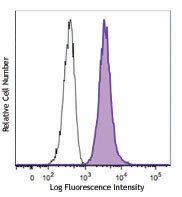
-

Human T leukemia cell line Jurkat (filled histogram) or Burkitt's lymphoma cell line Ramos (open histogram) were treated with FOXP3 Fix/Perm Buffer Set, and then stained with anti-human GATA3 (clone 16E10A23) Brilliant Violet 421™.
| Cat # | Size | Price | Quantity Check Availability | Save | ||
|---|---|---|---|---|---|---|
| 653813 | 25 tests | 182 CHF | ||||
| 653814 | 100 tests | 424 CHF | ||||
GATA3 functions as a major regulator of T helper 2 (Th2) cell differentiation in immune cells. GATA3 expression is upregulated through IL-4 receptor signaling or the Notch-mediated pathway, which results in production of IL-4, IL-5, and IL-13 cytokines, responsible for preferential differentiation of Th2-cells. GATA3 has been shown to regulate early developmental processes of T cells, such as T cell commitment, positive selection, and post-commitment CD4+ T cell survival. In the mammary gland, GATA3 plays an important role in differentiation and commitment of luminal epithelial cells. In a mouse model, exogenous expression of GATA3 in undifferentiated breast carcinoma cells induces differentiation and suppresses spreading of the tumor cells, suggesting that GATA3 is involved in preventing malignancy of breast cancer. GATA3 has been reported to be essential in the development of a variety of normal tissues. Defect in GATA3 results in hypoparathyroidism, sensorineural deafness, and renal dysplasia (HDR syndrome).
Product DetailsProduct Details
- Verified Reactivity
- Human, Mouse
- Antibody Type
- Monoclonal
- Host Species
- Mouse
- Immunogen
- Partial human GATA3 recombinant protein (1-258 aa).
- Formulation
- Phosphate-buffered solution, pH 7.2, containing 0.09% sodium azide and BSA (origin USA).
- Preparation
- The antibody was purified by affinity chromatography and conjugated with Brilliant Violet 421™ under optimal conditions.
- Concentration
- Lot-specific (to obtain lot-specific concentration and expiration, please enter the lot number in our Certificate of Analysis online tool.)
- Storage & Handling
- The antibody solution should be stored undiluted between 2°C and 8°C, and protected from prolonged exposure to light. Do not freeze.
- Application
-
ICFC - Quality tested
- Recommended Usage
-
Each lot of this antibody is quality control tested by intracellular immunofluorescent staining with flow cytometric analysis. For flow cytometric staining, the suggested use of this reagent is 5 µl per million cells in 100 µl staining volume or 5 µl per 100 µl of whole blood.
Brilliant Violet 421™ excites at 405 nm and emits at 421 nm. The standard bandpass filter 450/50 nm is recommended for detection. Brilliant Violet 421™ is a trademark of Sirigen Group Ltd.
Learn more about Brilliant Violet™.
This product is subject to proprietary rights of Sirigen Inc. and is made and sold under license from Sirigen Inc. The purchase of this product conveys to the buyer a non-transferable right to use the purchased product for research purposes only. This product may not be resold or incorporated in any manner into another product for resale. Any use for therapeutics or diagnostics is strictly prohibited. This product is covered by U.S. Patent(s), pending patent applications and foreign equivalents. - Excitation Laser
-
Violet Laser (405 nm)
- Product Citations
-
- RRID
-
AB_2563220 (BioLegend Cat. No. 653813)
AB_2563220 (BioLegend Cat. No. 653814)
Antigen Details
- Structure
- 48 kD protein containing two GATA-type zinc finger domains responsible for DNA binding and two trans-activating domains at N-terminus.
- Distribution
-
Nucleus
- Function
- GATA3, a transcriptional activator, binds to a consensus DNA sequence 5'-(A/T)GATA(A/G)-3' in the promoter region of genes, regulates T cell development, TH2 cell differentiation, and luminal cell proliferation.
- Interaction
- Interacts with Smad3, FOG1, FOG2, and PU.1.
- Biology Area
- Cell Biology, Chromatin Remodeling/Epigenetics, Immunology, Signal Transduction, Transcription Factors
- Molecular Family
- Nuclear Markers
- Antigen References
-
1. Yagi R, et al. 2011. Int. Immunol. 23:415.
2. Chou J, et al. 2010. J. Cell Physiol. 222:42.
3. Ho IC, et al. 2009. Nat. Rev. Immunol. 9:125.
4. Rothenberg EV, et al. 2008. Semin. Immunol. 20:236.
5. Kouros-Mehr H, et al. 2008. Curr. Opin. Cell Biol. 20:164.
6. Van Esch H, et al. 2000. Nature 406:419. - Gene ID
- 2625 View all products for this Gene ID 14462 View all products for this Gene ID
- Specificity (DOES NOT SHOW ON TDS):
- GATA3
- Specificity Alt (DOES NOT SHOW ON TDS):
- GATA3
- App Abbreviation (DOES NOT SHOW ON TDS):
- ICFC
- UniProt
- View information about GATA3 on UniProt.org
Related FAQs
- What is the F/P ratio range of our BV421™ format antibody reagents?
-
It is lot-specific. On average it ranges between 2-4.
Other Formats
View All GATA3 Reagents Request Custom Conjugation| Description | Clone | Applications |
|---|---|---|
| PE anti-GATA3 | 16E10A23 | ICFC |
| APC anti-GATA3 | 16E10A23 | ICFC |
| Alexa Fluor® 488 anti-GATA3 | 16E10A23 | ICFC |
| Alexa Fluor® 647 anti-GATA3 | 16E10A23 | ICFC |
| PerCP/Cyanine5.5 anti-GATA3 | 16E10A23 | ICFC |
| Brilliant Violet 421™ anti-GATA3 | 16E10A23 | ICFC |
| PE/Dazzle™ 594 anti-GATA3 | 16E10A23 | ICFC |
| PE/Cyanine7 anti-GATA3 | 16E10A23 | ICFC |
Customers Also Purchased

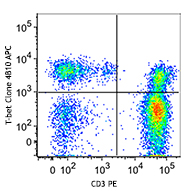

Compare Data Across All Formats
This data display is provided for general comparisons between formats.
Your actual data may vary due to variations in samples, target cells, instruments and their settings, staining conditions, and other factors.
If you need assistance with selecting the best format contact our expert technical support team.
-
PE anti-GATA3

Human T leukemia cell line Jurkat (filled histogram) or Burk... 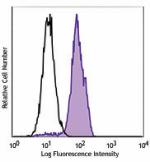
Murine Th2 cell line D10.G4.1 (filled histogram) and B lymph... -
APC anti-GATA3
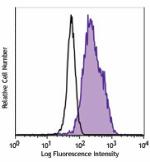
Human T leukemia cell line Jurkat (filled histogram) or Burk... 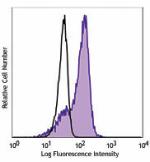
Murine Th2 cell line D10.G4.1 (filled histogram) or B lympho... -
Alexa Fluor® 488 anti-GATA3
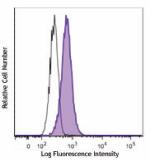
Human T leukemia cell line Jurkat (filled histogram) or Burk... -
Alexa Fluor® 647 anti-GATA3

Human T leukemia cell line Jurkat (filled histogram) or Burk... -
PerCP/Cyanine5.5 anti-GATA3

Human T leukemia cell line Jurkat (filled histogram) or Burk... -
Brilliant Violet 421™ anti-GATA3
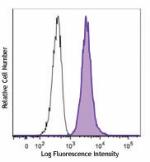
Human T leukemia cell line Jurkat (filled histogram) or Burk... -
PE/Dazzle™ 594 anti-GATA3

Th2 polarized human peripheral blood lymphocytes were treate... 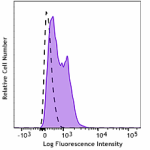
Murine Th2 cell line D10.G4.1 was treated with True-Nuclear™... -
PE/Cyanine7 anti-GATA3

Th2 polarized human peripheral blood lymphocytes were treate... 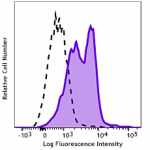
Murine Th2 cell line D10.G4.1 was treated with True-Nuclear™...
 Login / Register
Login / Register 










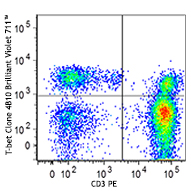



Follow Us